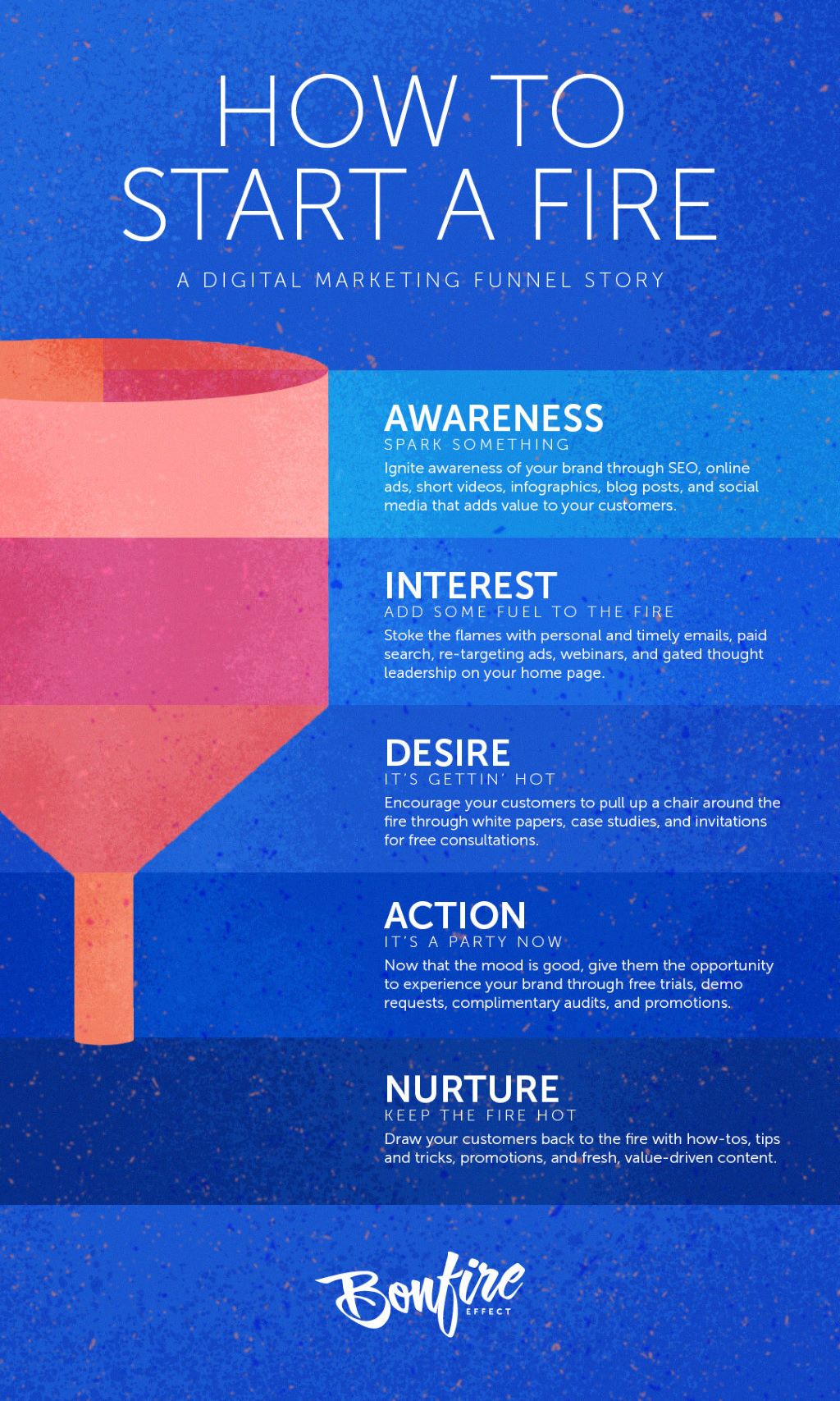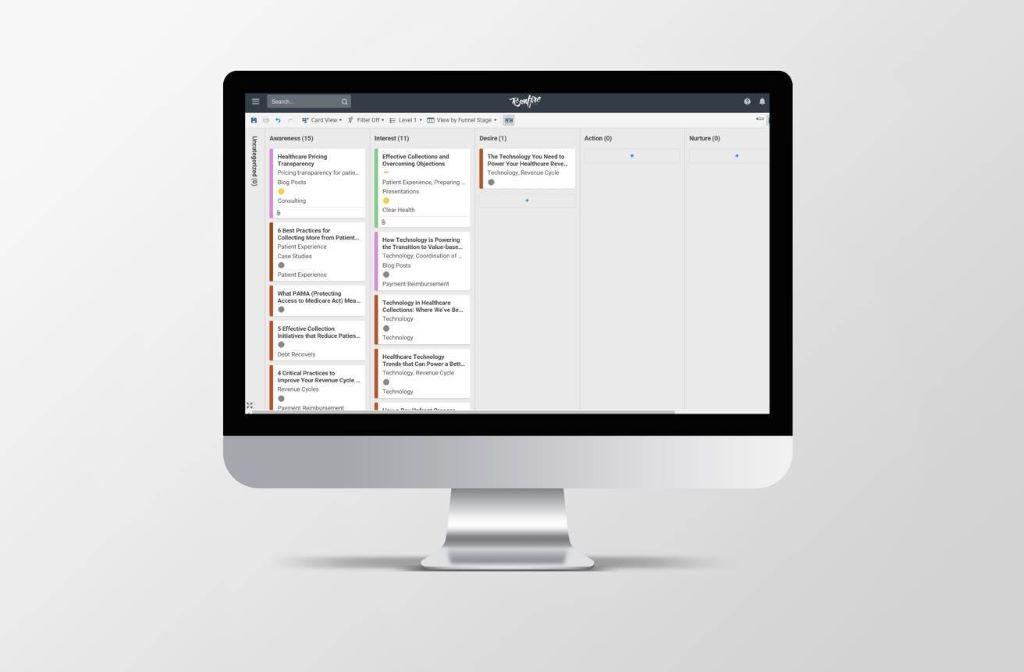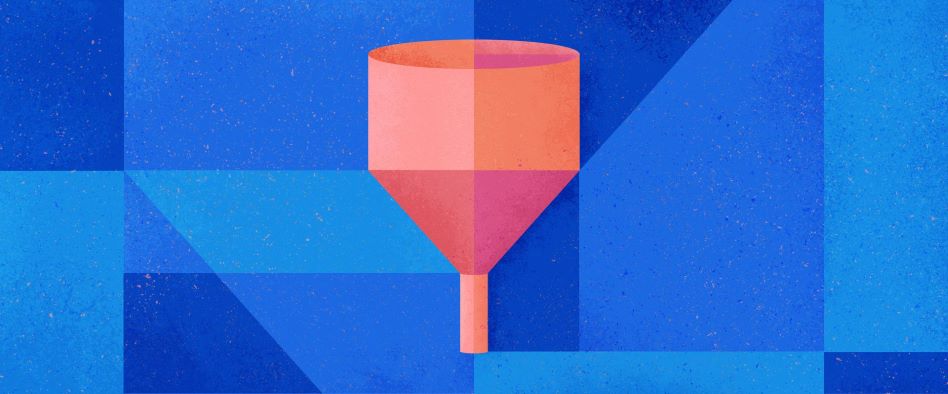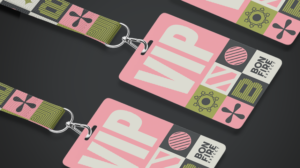Marketing funnels. Less tasty than funnel cakes, but much better at helping companies nurture a lead into a customer, a customer into a brand fanatic.
The terminology may vary, but a marketing funnel typically follows this progression – the same progression that your customers take on their way to buying your product or service:
- Awareness
- Interest
- Desire
- Action
Some add “loyalty” or “nurture” to the very bottom of the funnel as a reminder that the best customer is an existing customer. Other depictions of the marketing funnel get even more specific, adding phases like “Visits,” “Sales,” and “Marketing-qualified Leads.”
As a creative branding agency, this is how we at Bonfire Effect define the marketing funnel.
If we’re honest, most of us spend much more time focusing on the quantifying nature of our marketing funnels. We’re looking at the funnel wondering how the company is doing. We’re focusing on our story, not the customer’s story.

It’s About the Customer’s Journey
While the terminology may vary, the purpose of marketing funnels remains relatively constant. Marketing funnels are really good at two things: they help you simplify and visualize your customer’s journey, and they help you measure the effectiveness of your sales and marketing strategies.
The first one is pretty easy to grasp. Marketing funnels are like a map – the map that your customers follow as they interact with your brand. They help you help them by getting them from the trailhead to the summit (sorry – we’re Coloradoans, and mountain metaphors just come naturally).
The second takes a little more work, because it holds up a mirror to your processes and strategies. (This is especially important in the B2B space, which typically has a more complicated sales process than the B2C sales process.) A well-defined B2B marketing funnel can help you identify where you’re losing customers, and which phases of your marketing strategy need a pivot, refresh, or overhaul. Are you losing customers before they get past the Interest stage? Then maybe you need to step up your email game. Maybe your content – blog posts, webinars, case studies, etc. – has gaps (more on this later) or is not connecting on a personal level with your intended audience.
If we’re honest, most of us spend much more time focusing on the quantifying nature of our marketing funnels. We’re looking at the funnel wondering how the company is doing. We’re focusing on our story, not the customer’s story.
But, as mentioned above, a marketing funnel is valuable because it offers a way to understand and enter into your customer’s story. A marketing funnel really isn’t about marketing at all. It’s about empathy – the groundwork for genuine relationships. If a marketing funnel is going to be of any value to you and your business, the customer has to be the hero, and you have to be the guide for their journey.
Three Steps to Identifying (and Filling) Content Gaps
This brings us full circle to the aforementioned “gaps” in your content and gives us a fresh way to approach content gap analysis. The cold, hard data in the spreadsheet is warmed with a relationship-centric framework: how can I be a better guide to my customers?
Content gap analysis reveals where your content strategy is failing to guide customers through your sales / marketing funnel. Defining and qualifying your funnel is a good and wise business practice. But if your content is out of step, it’s like watching Elaine Benes on the dance floor. Not pretty.
How do you go about conducting a content gap analysis?
First, put the right content in the right funnel stage. That white paper you’re using as an awareness-generating piece? Too high. Things like white papers and case studies need to used in the lower funnel stages to help move the customer to take action. Blog posts, podcasts, paid search – these are all are high-in-funnel content pieces that pique your customer’s interest and demonstrate that you are a capable guide to help them on this journey.
Now that you know where different types of content should be used, we’ve put together a content map template just for you. (This template is in Smartsheet, so let us know if you want a copy, and we’ll send one your way!)
To use the template, first input the last one to two month’s-worth of content, then, in the Funnel Stage column, identify where in your funnel that piece of content is supposed to reinforce. Next, filter by marketing funnel stage to see how many content pieces you have for each stage. Let’s say most of your content fits in the Awareness and Interest stages, but you have very little in the Desire, Action, or Nurture stages. You just found a content gap.
It’ll look something like this:

A B2B content gap analysis template. Just say “no” to gaps!
Hooray! Now you know where the customer is getting lost and confused, and you can begin to take steps to correct the situation. You’re using your marketing funnel as it was designed – to give you greater empathy for your customer, and to strengthen your marketing / content strategies to be a better guide on their journey.
Win, win. Who said marketing funnels weren’t tasty?


